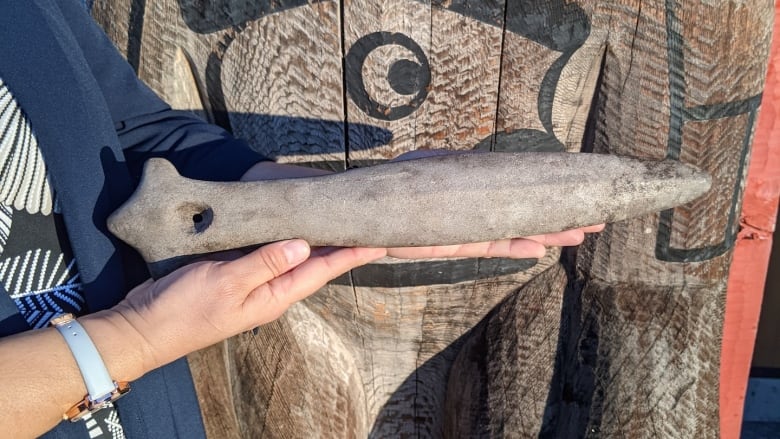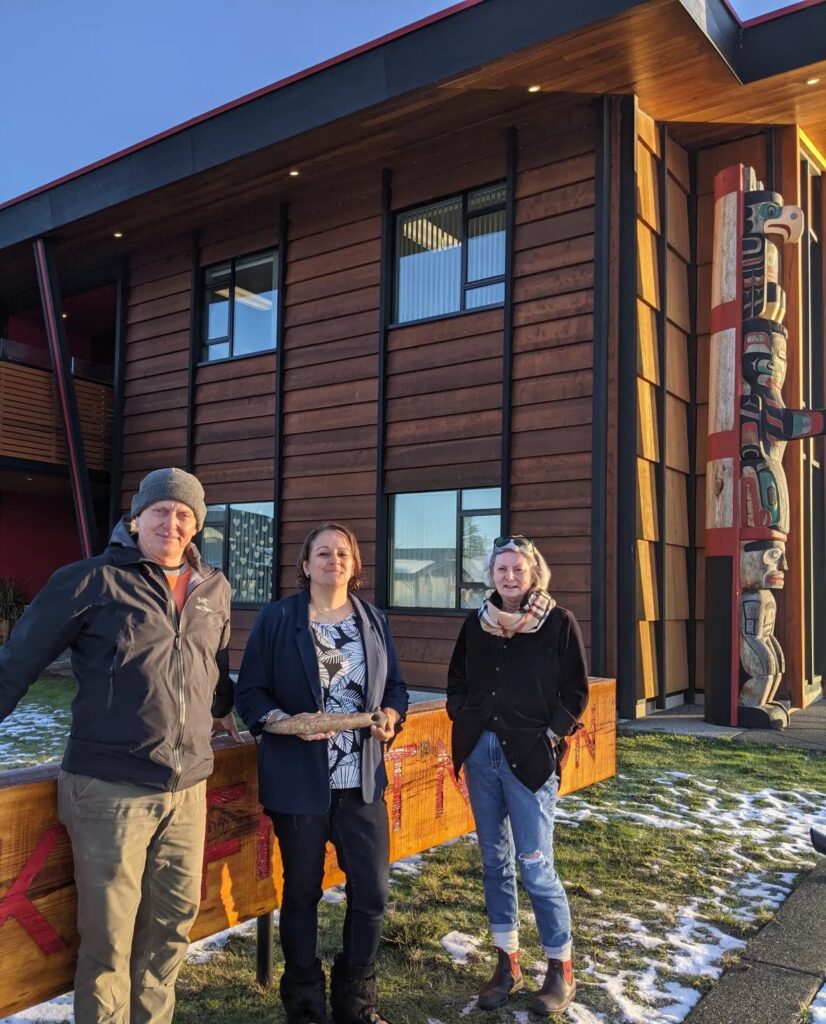Ancient Coast Salish war club discovered in Vancouver Island man’s backyard
Mark Lake found a little piece of history in his backyard while cleaning up after a storm last April.

Lake, of Gartley Point near the seaside village of Royston in Vancouver Island, came across an interesting piece of wood sticking out from under his maple tree — which turned out to be an ancient Coast Salish war club.
After friends saw pictures of it, they directed Lake to the K’omoks First Nation.
Chief Nicole Rempel of the K’omoks First Nation says it was pretty exciting.
“I’ve worked with various people repatriating artefacts since 2013 for our nation and I hadn’t seen a piece like this, completely intact,” she said.

Rempel says the club is quite significant to the nation’s culture and that it’s always exciting when something can be returned to its “rightful place.”
“It helps us understand more about our ancestors in the way that we live, the tools that we created,” she said.

“It truly must have been a labour of love to have made something so intricate, and with so little tools, back in those times, so it really gives us a bit more information about who we were, who our ancestors were in the past,” she said.
Lake says he’s just as excited about returning the artefact and learning more about it from the nation.
“They’ve been very open with exchanging any information they have gleaned on it as to its history and where it may have come from and so that’s reward enough for us and we really enjoyed being part of the process,” he said on CBC’s All Points West.
Rempel says they are working with an archaeologist to determine more about the artefact.
“We can do some geotechnical testing on the club, or geochemistry, which would figure out what kind of stone it was made of and what region it came from or whether it was traded,” she said.
Rempel says what Lake did was commendable, as many people who find things like this don’t always bring them forward.
“I just really encourage everyone that finds an artefact or ancestral remains for that matter to reach out to the local Indigenous communities because it’s really just building our database of knowledge and identifying who we are and who we were,” she said.





